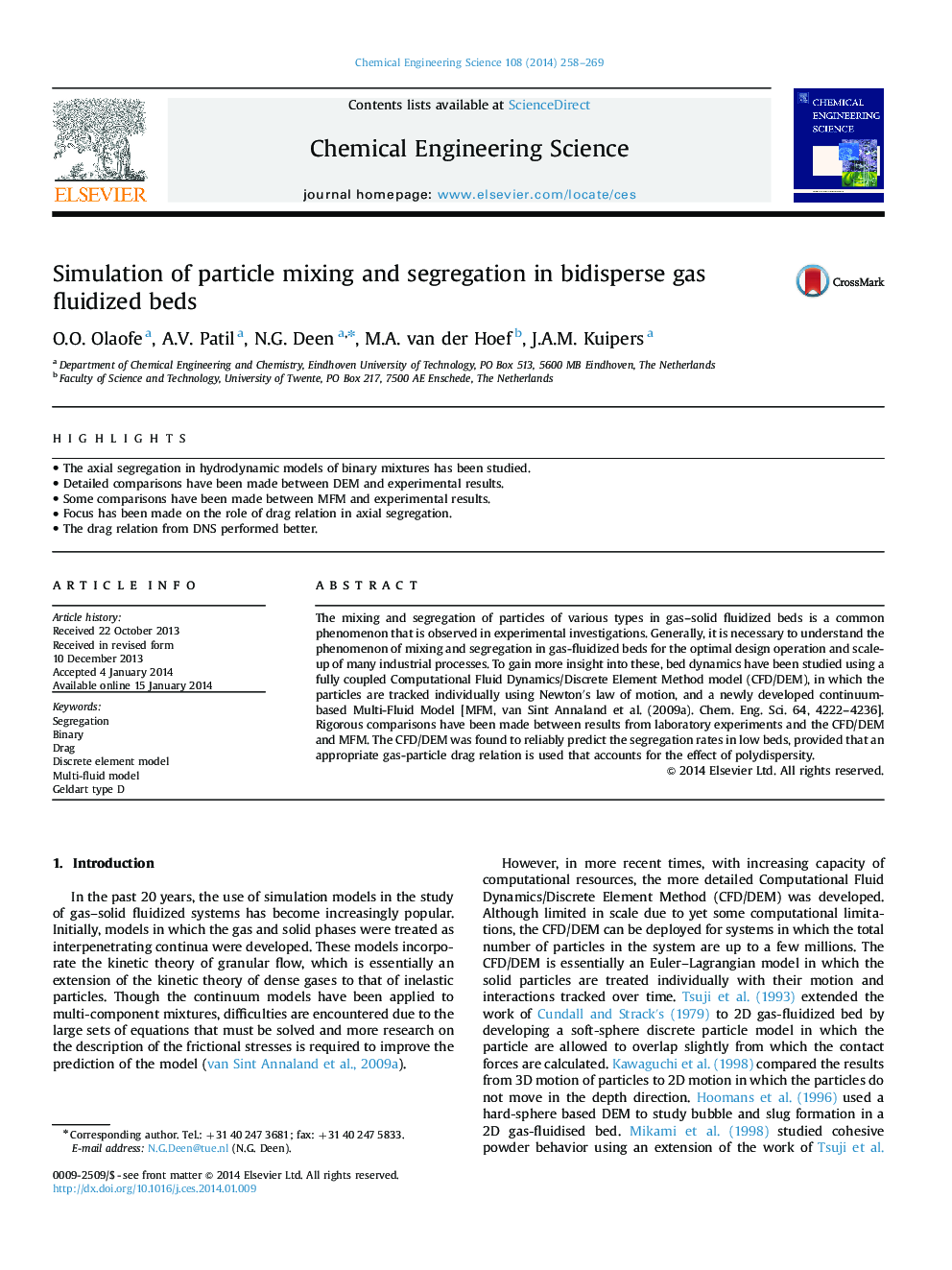| Article ID | Journal | Published Year | Pages | File Type |
|---|---|---|---|---|
| 154934 | Chemical Engineering Science | 2014 | 12 Pages |
•The axial segregation in hydrodynamic models of binary mixtures has been studied.•Detailed comparisons have been made between DEM and experimental results.•Some comparisons have been made between MFM and experimental results.•Focus has been made on the role of drag relation in axial segregation.•The drag relation from DNS performed better.
The mixing and segregation of particles of various types in gas–solid fluidized beds is a common phenomenon that is observed in experimental investigations. Generally, it is necessary to understand the phenomenon of mixing and segregation in gas-fluidized beds for the optimal design operation and scale-up of many industrial processes. To gain more insight into these, bed dynamics have been studied using a fully coupled Computational Fluid Dynamics/Discrete Element Method model (CFD/DEM), in which the particles are tracked individually using Newton's law of motion, and a newly developed continuum-based Multi-Fluid Model [MFM, van Sint Annaland et al. (2009a). Chem. Eng. Sci. 64, 4222–4236]. Rigorous comparisons have been made between results from laboratory experiments and the CFD/DEM and MFM. The CFD/DEM was found to reliably predict the segregation rates in low beds, provided that an appropriate gas-particle drag relation is used that accounts for the effect of polydispersity.
